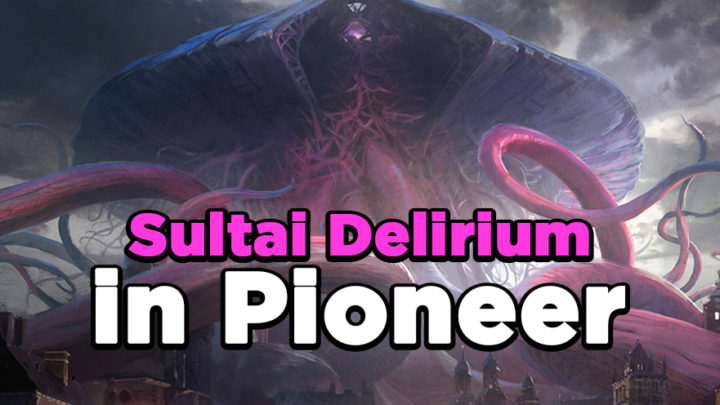Editor’s Note: This article was originally published on February 27, 2020. We want to ensure you have the most up-to-date information about popular decks, so we’ve updated this post and re-published it on April 28, 2020.
When Wizards first introduced Pioneer, the stated mission of the format was to give players who have been around for the last seven years an excuse to dust off cards they aren’t using. I can’t think of a Pioneer deck that embodies this notion more than Sultai Delirium, the winning deck from Players Tour Brussels. On paper, Sultai Delirium looks like a bunch of cards someone pulled out of their trade binder. But in practice, every piece has a crucial role, and those roles can change through tournaments, matches, or even turns.
Sultai Delirium combines the best parts of classic midrange decks like Bloodbraid Elf Jund and Siege Rhino Abzan. Its efficient value and range of hard-to-answer threats have made it the premier midrange deck in Pioneer. If you’re a fan of midrange decks — and want to get more mileage out of your Shadows Over Innistrad-era cards — then this is the deck for you.
With the introduction of Ikoria, the deck has seen some shifts, and the metagame around it has evolved as well. Companions have taken Pioneer by storm, and it’s more important than ever to keep up-to-date with the fast-moving Pioneer metagame.
Sultai Delirium by Anthony Lowry
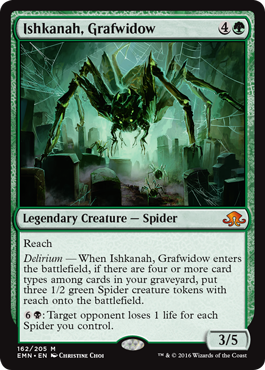
4 Satyr Wayfinder
4 Uro, Titan of Nature’s Wrath
3 Jace, Vryn’s Prodigy
2 Murderous Rider
1 Walking Ballista
1 Ishkanah, Grafwidow
1 Atris, Oracle of Half-Truths
2 Tireless Tracker
1 Nissa, Who Shakes the World
1 Tamiyo, Collector of Tales
4 Thoughtseize
4 Fatal Push
3 Traverse the Ulvenwald
1 Heartless Act
1 Eat to Extinction
2 Abrupt Decay
1 Grapple with the Past
1 Grisly Salvage
4 Overgrown Tomb
4 Breeding Pool
4 Blooming Marsh
3 Fabled Passage
2 Zagoth Triome
1 Botanical Sanctum
2 Forest
1 Island
1 Swamp
1 Ipnu Rivulet
Sideboard:
3 Damping Sphere
2 Leyline of the Void
2 Disdainful Stroke
2 Mystical Dispute
1 Liliana, the Last Hope
1 Hostage Taker
1 Reclamation Sage
1 Witch’s Vengeance
1 Kalitas, Traitor of Ghet
1 Unmoored Ego
Editor’s Note: Walking Ballista was banned in Pioneer effective August 3, 2020.
The Core
Creatures
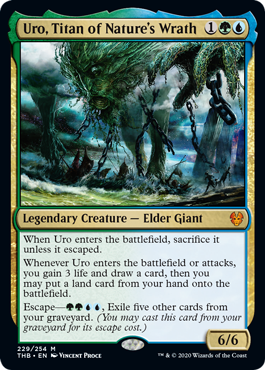
Let’s get this out of the way right now: This deck does not function without four copies of Uro, Titan of Nature’s Wrath. Uro serves as a bridge between your early plays and your late-game value threats. In fact, it’s a value threat in and of itself, and it’s easily your best card against anything trying to attack. It gives you yet another thing to do with your graveyard. The conflict between escaping Uro and keeping cards in your graveyard for delirium isn’t too much of an issue; most of the time, the choice will be clear. It’s often okay to give up delirium if it means developing your board with cards like Ishkanah, Grafwidow; Emrakul is a non-factor in this situation (if you’re playing it).
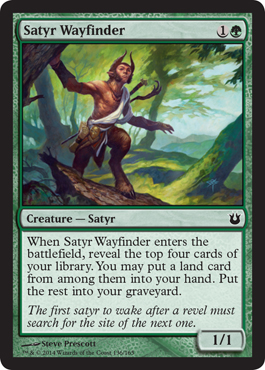
After Uro comes Satyr Wayfinder, the actual best card in the deck. It fuels your graveyard for delirium and Uro, helps find Uro itself, and gives you a blocker for the aggressive decks. The last point should be emphasized because a lot of the non-red aggressive decks tend to play one-toughness creatures, and being able to trade with those is a huge boon for this deck.
You may be asking why Satyr Wayfinder is a better card than, say, Grisly Salvage or Grapple with the Past. This is because, at worst, Satyr Wayfinder costs you a card, whereas Grisly Salvage costs you a turn. While Grisly Salvage is the better card when nothing is happening, Wayfinder is the better card when you need to get off the ground.
Spells
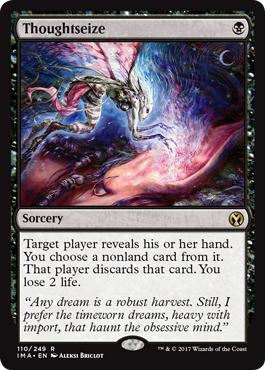
Thoughtseize is the best card in Pioneer, and needs little introduction, but there are some conventions worth challenging. First, you do not have to cast Thoughtseize on turn one in every game, especially if life is important or you know what you’re playing against. Sometimes it’s best to give your opponent a turn to develop before picking apart their plan, especially if they’re a slower deck. You can gather a ton of context from their turn one play, and your Thoughtseize’s value will drastically improve if you do so. The downside to this is that you can get Thoughtseized yourself, and other forms of interaction, such as Mausoleum Wanderer and Stubborn Denial, can stymie you, so plan with care.
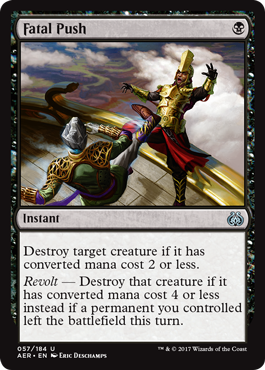
Fatal Push is the premier removal spell in the format, and it’s even more powerful in this deck because Uro and Fabled Passage enable revolt. Your other removal spells should compliment Fatal Push and shore up its shortcomings.
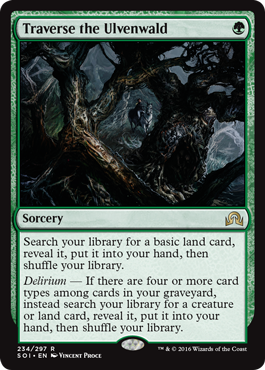
Traverse the Ulvenwald is your best tutor on turn one, and in the late game. You can often keep land-light hands and smooth out your mana with this card (if Satyr Wayfinder didn’t already do that job) while also being able to Demonic Tutor for the Grand Slam, Emrakul, the Promised End. You don’t have to play four, but having some number will take you a long way.
Companions
Currently, there are two ways to go about building around your core: with companions, and without.
The two companions worth considering are Yorion, Sky Nomad, and Jegantha, the Wellspring.
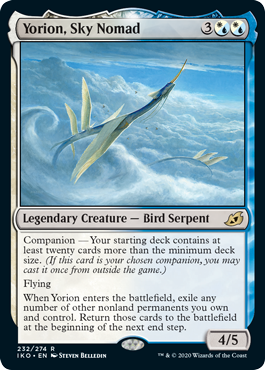
If you decide to go with Yorion, your deck-building decisions become relatively easy; when your deck has 80 cards, you don’t need to agonize over which cards to cut. This also allows you to play more silver bullets for Traverse the Ulvenwald; in fact, you can play more copies of Traverse, too.
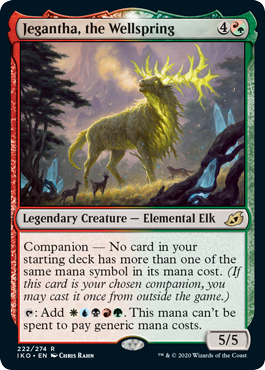
If you’d rather stick to 60 cards, try Jegantha as your companion. It’s a nifty midrange threat that only costs you a sideboard card, gives you a hard to kill body at the top end of your curve, and has a negligible deck-building restriction.
The Supporting Cast
This deck includes a lot of one-ofs, and how many you choose to include depends on how you want to enable delirium (specifically for Traverse the Ulvenwald). At minimum, you’ll want Ishkanah, an artifact or enchantment (preferably also a creature), a creature that interacts with the board or the hand, and Emrakul. Everything else is gravy from that point onward, but try not to go overboard, as you begin diluting your deck.
Delirium Enablers and Payoffs
My delirum package contains Walking Ballista and Murderous Rider, so I can effectively tutor up removal spells. Other options I’ve tried include Scavenging Ooze, a second Ishkanah, Courser of Kruphix, and Frilled Mystic.
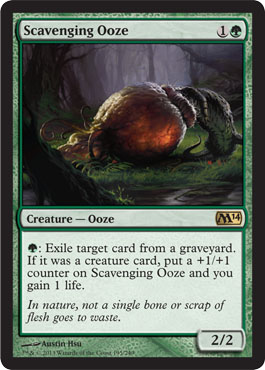
Scavenging Ooze is cheap to play and profit from, but I think Tireless Tracker fills that role just as well; plus, the life-gain from Ooze doesn’t provide enough safety from aggressive decks.

Ishkanah is a good safety net if you want to brick-wall people. Courser of Kruphix has the same issues as Scavenging Ooze, but has the slight benefit of being an enchantment.
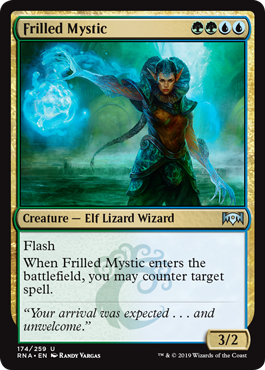
Meanwhile, Frilled Mystic can turn a slightly advantageous board state into a dominant one whenever you Traverse for it. The angle of attack it provides is unlike any other card in Pioneer, especially coming out of a sorcery-speed midrange deck. I highly recommend trying it.
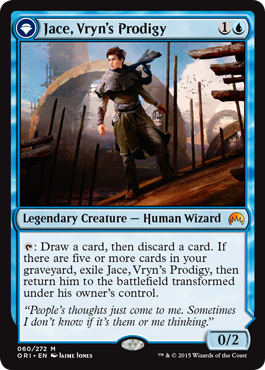
Jace, Vryn’s Prodigy is the secret all-star of the deck. He does everything you want: filters your draws, blocks when necessary, and turns into a high-loyalty Planeswalker that stifles creatures and rebuys your spells. He’s a bit weaker post-sideboard, but if you can answer Rest in Peace and Leyline of the Void, you’ll still want him.
The Lands
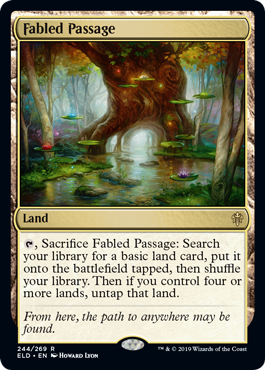
Generally, you want to have one or two more basic lands than you have Fabled Passages. You want to play no less than three Fabled Passages because it’s a very easy way to turn on revolt for Fatal Push and it can provide an extra clue token for Tireless Tracker. If you want to add additional Trackers to your deck, I would opt to play a second Island and a fourth Fabled Passage.
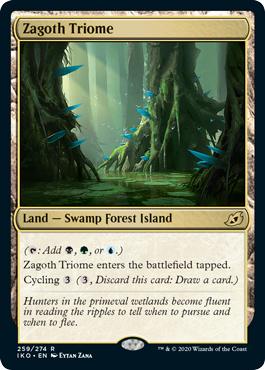
With the release of Ikoria, Triomes are your new best friend, and Zagoth Triome is a perfect fit for your mana base. The more lands you play, the more Zagoth Triomes you’ll want to include. The Triomes don’t exactly play nicely with Fabled Passage, though; I would prioritize Fabled Passage to get maximum value out of Fatal Push.
I also recommend maxing out on Overgrown Tomb and Breeding Pool, as they’re your best lands. Watery Grave isn’t as important, but you could consider running some number to tie things together.
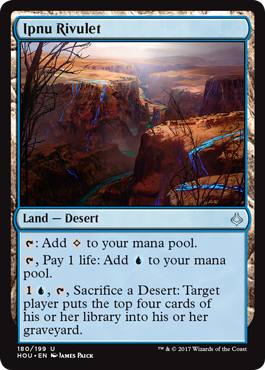
Ipnu Rivulet is important because it not only can steal wins against ambitious Inverter opponents, but it can fill your graveyard in a pinch, and it’s an outlet for revolt. The cost of one life is extremely minimal, so I highly recommend it.
Twenty-three lands has been the baseline for this deck, but I can see playing 24 if you want to make Uro that much better. You should also add lands to the deck if you want additional copies of Nissa, Who Shakes the World.
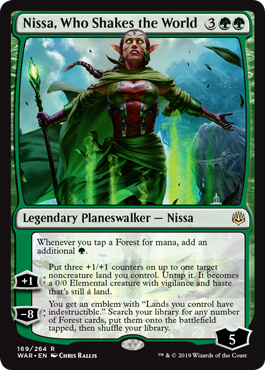
The Sideboard
In my opinion, sideboarding is the most crucial skill to master in Pioneer. Luckily, we have access to two of the best sideboard colors in the format: blue and black.
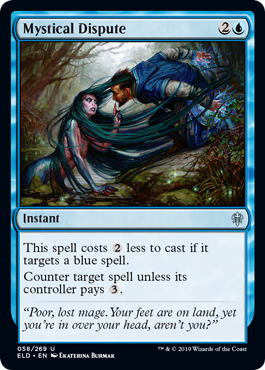
It’s always a good idea to start off with some number of Mystical Dispute and Disdainful Stroke, as they’re so good against so many decks. From there, you can add Unmoored Ego if you really want to target Inverter and Underworld Breach decks. Additional discard spells, such as Agonizing Remorse and Thought Erasure, are also helpful. You can also add more value cards, like additional Tireless Trackers, more interaction in Assassin’s Trophy, or the perennial “I won’t lose to Underworld Breach” card, Damping Sphere.

I chose to include Witch’s Vengeance in my sideboard because it’s the cheapest Sultai-colored sweeper against Spirits. It isn’t terribly difficult to profitably set it up; a single Fatal Push is usually enough to get a lord out of the way. It’s also usually kills two creatures against Mono-Red, and it has a ton of value against Vampires and Sram Auras.
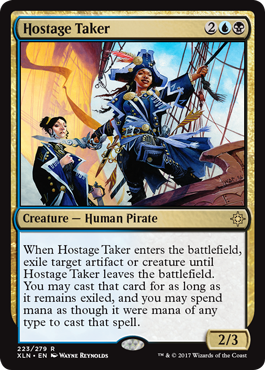
I also like Hostage Taker, which is basically a midrange dream. It hits opposing Uros, Rankles, Spirits, Ensoul Artifact targets (including Darksteel Citadel), and Gods.
The world is truly your oyster with Sultai sideboards, and I encourage you to try out many different things!
Traverse the Pioneer Metagame
This is one of the most fun decks I’ve played in Pioneer, and I will continue to play it through and through. Uro is one of the best midrange value cards ever printed, and I’ll be more than happy to cast 6/6’s for four mana as long as I can.

Anthony Lowry is a high level competitor in several games, and Magic is no exception. His newfound passion for deckbuilding has reignited his drive to compete and test his skill against the best.

